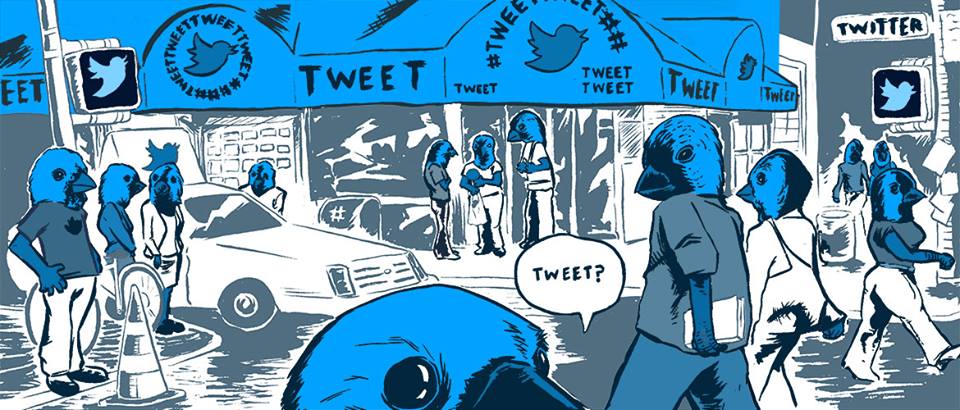When most people hear that we “blog” for a living, they think of homespun bloggers posting recipes and ranting about our kids and yoga sessions. No, really, somebody actually said that once.
Personal blogs are great, but in today’s digital environment, blogs are used differently, particularly when used by small businesses and professional service providers. Blogs are now some of the most reliable audience development tools for people who understand how to maximize this wonderful platform.
So, who is your blog audience? Do you recognize the types of blog readers that exist, and do you create relationships with them? Let’s take a look at some of the different blog reader types and how blogs are being used by both B2B and B2C companies to share information and instill a sense of trust in audiences.
The Wide World of Blogging
From a business standpoint, business-to-business (B2B) and business-to-consumer (B2C) blogs are the main options. Although they share some similarities, like optimized content and frequently published content, they are created slightly differently.
First, it’s worth noting that B2B content marketers see significant value in using blogs. According to the Content Marketing Institute, “Seventy-three percent of B2B marketers said they are producing more content now compared to one year ago.” There are also larger budgets devoted to custom content or a content marketing strategy.
B2B Blogging
B2B blogs are generally built to bring in new website visitors and convert those visitors into new leads. For example, one of our clients uses their blog to offer small-business marketing advice. They do this because their target client is a small business looking for new ways to build its business.
Depending on your audience, tone is variable in the B2B market when it comes to blogging. Are your users, clients, or customers academics, or are they an average Joe? Or are they somewhere in between? Using the wrong tone can scare readers away. Using too much jargon can do this too. You can never make a blog too easy to read, but it’s very easy to make it too hard to read.
B2C Blogging
On the other side, B2C blogs often use a friendlier tone because they want to connect with customers on a personal level. B2C bloggers tend to be more lighthearted in their writing, sharing person anecdotes that may or may not be associated with getting a lead right then and there. Although the point of blogging for business is to get more customers and clients, B2C blogs do a lot more branding than B2B, which are slightly more aggressive.
Consumers reading B2C blogs are certainly more interested in reading well-crafted stories than professionals reading B2B blogs who are working on deadlines or swamped with a dozen other tasks to complete. Bulleted lists might be a little overused in blogging today, but B2B blogs use them very well. Making your content skimmable and your call to action bold is the key to any good business blog.
What Readers Want From a Blog
B2B blog readers will want content that helps them do their job better and more efficiently. They will expect the blog to be well-designed so that finding pertinent information is easy. B2B blogs are often filled with industry information that goes beyond the direct knowledge of its writer. A lot of research is done by managing editors of B2B blogs, finding as much relevant content as possible makes them an even more reliable source of content, as opposed to companies that share only in-house information.
B2C blog readers want great information, but they also desire a casual tone. These readers are going to blogs because they’re interested in specific topics – it’s not about their jobs. It’s very likely that a reader will stop visiting a blog if its writing style is too rigid.
The Reading Habits of Blog Users
B2B blog readers will often read differently than B2C blog readers. Business professionals want the most relevant news as quickly as possible, so they will sign up for RSS feeds and follow certain Twitter feeds to find new articles as soon as they publish.
B2C blog readers are more apt to subscribe to email newsletters or follow blogs via Facebook. Many B2B blog readers will avoid Facebook because it can be distracting and email newsletters will only lead to higher volumes of email coming into their inboxes.
Characteristics of Good Blogs
Whether it’s a B2B blog or a B2C blog, all good blogs have great content, are well-edited, read smoothly, and are properly optimized for search engines. They balance white space with imagery and are updated with new content frequently. They present an accurate portrayal of a business or topic and offer ways of contacting the blog manager, as well as commenting on and sharing articles.
It’s a wonderful time for blogs. People are recognizing their value and using them to inform the world about things they’re knowledgeable about. The information age feels more complete, since anyone can start and run a blog, even if they aren’t technologically savvy, provided they have an extensive knowledge of other subjects.











